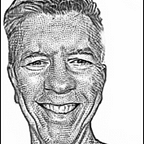AntiFragile — An Introduction
After reading Nassim Nicholas Taleb’s book, “Antifragile — Things that Gain from Disorder”, I decided the concept was too important to just move on without really applying it to my life and sharing that experience and knowledge with you. So, this article is the first of a number of articles on this topic.
“AntiFragile” is the term that Nassim coined as the opposite of Fragile. Well, Duh. But what does it really mean? He claims (and I have done some checks on my own, and it is generally true), most people, when asked what the opposite of “fragile” is, will tell you it is something like “robust” or “stable” or “sturdy”. But, if fragile means “that what does not like volatility”, or as Nassim says, “does not like stressors, harm, chaos, events, disorder, ‘unforeseen consequences’, uncertainty and critically, time”, then antifragile means to thrive on those things, not just be unmoved. To thrive on volatility means we welcome it, we need it, we grow stronger from it. (It might not always be enjoyable, but neither are the other states like “sturdy” or “fragile”.)
Why is this such an important topic? Because we live in a world where there is chaos, disorder, uncertainty and “time”. I would argue this has been true for many, many years, and all generations, but as communication becomes better and the world becomes “smaller”, we are experiencing more of it as time goes on. So in today’s world I would argue being “fragile” makes living difficult, being “robust” just gets you through to the end, and being “antifragile” enables you thrive and grow in the midst of the chaos.
Nassim argues that being antifragile means that we can deal with the unknown, we can do things without understanding them — and do them well. He points out that there are things in our world that demonstrate these antifragile tendencies: economic systems, our bodies, our nutrition, and our psyche. As he mentions, and this is what really got me hooked on the concept, the latest research shows that modern ailments such as diabetes seem to be associated with a lack of randomness in feeding and the absence of the stressors of occasional starvation. Another example: American lifestyle today tends to encourage no stress, i.e., no exercise, sitting for hours on soft chairs, eating anything we want to eat (and there is a never ending supply of sugary and artificial ingredients to trick our bodies into loving it). Unless we apply stress on the body, we will not grow stronger and more adaptable to change. If we never work out, never put ourselves in situations where we have to move quickly, never have to recover from a misstep or some unforeseen obstacle, then when we fall at age 65 , we break a hip (vs. take a shoulder roll without thinking about it and coming back up on our feet).
So what does it look like to be “Antifragile” today? Here are some features we see in antifragile people:
- they see setbacks as learning, not failure. if we aren’t seeing any setbacks, we are becoming more accustom to the status quo (which increases fragility)
- they see stressors as critical to growth. E.g., exercise stresses the body and makes it more “confident” in handling what shows up physically.
- they see change as required. If things aren’t changing, then fragility is increasing
- they see growth as small improvements where we learn and grow, learn and grow (notice learning will mean “setbacks” in at least some of the cases).
Applying antifragile to our lives, I argue, gives us more chance for longevity of life. And not just making it to a very old age, but making it there with energy, aliveness and spark that comes from welcoming and experiencing change. We are not just “making it through”, we are “alive”. We don’t need much to be really alive… just the ability to know that we can handle anything that comes along because are Antifragile and practicing. (By the way, there is a very good talk by Burgs and the Art of Meditation on Insight Timer on “what it takes to be alive”.)
In future articles I will cover various aspects of Antifragile and how we can apply the concept to handle life as it is dished out to us. What a wonderful future we have before us!
